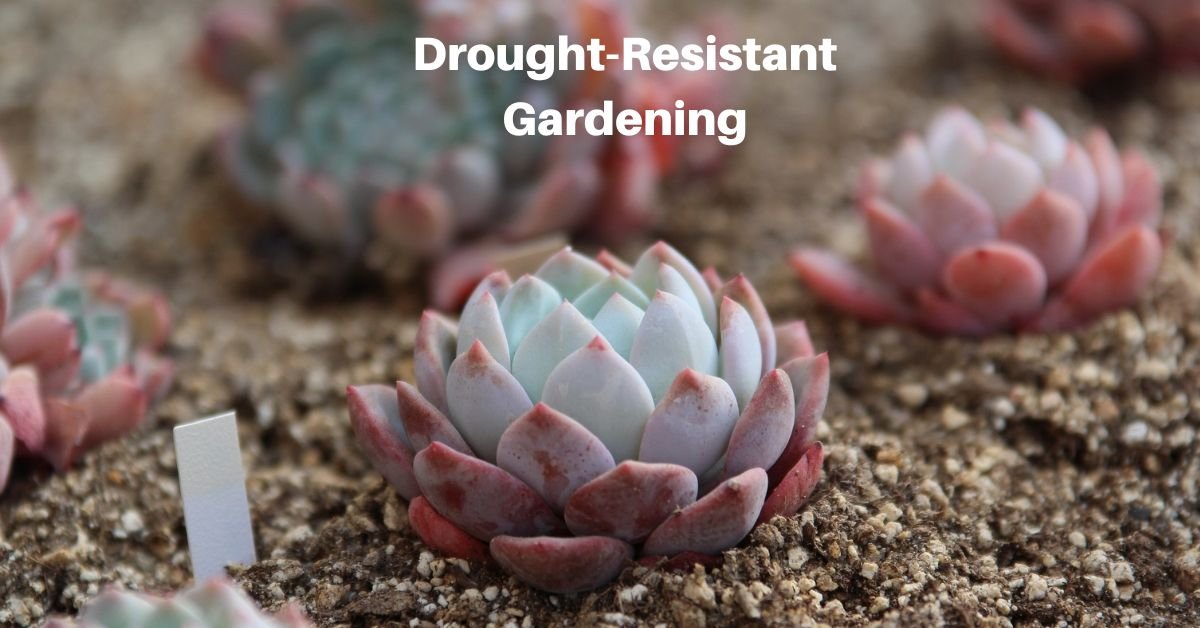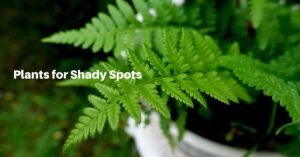Water conservation has always been important in certain regions, and it’s increasingly crucial in the face of changing climate patterns. Homeowners and gardeners are adopting more sustainable landscaping practices to address this challenge.
One practical approach is using drought-tolerant plants, which require less water while creating stunning landscapes with minimal maintenance. This shift towards drought-tolerant gardening, often known as xeriscaping, offers a practical solution for having a lush, vibrant garden environment while respecting water shortages.
Understanding Drought-Tolerance
Drought-tolerant plants are uniquely adapted to survive in dry conditions with minimal need for supplemental watering. These plants have developed a range of physical traits to conserve water, making them ideal for arid climates and water-scarce situations:
- Deep Root Systems: Many drought-tolerant plants have deep root systems that tap into underground water sources, meaning they rely less on surface watering.
- Succulent Leaves: Succulents are a common type of drought-tolerant plant that stores water in their thick, fleshy leaves. This allows them to thrive even during prolonged dry spells.
- Protective Foliage: Some drought-resistant plants have leaves with waxy or hairy coatings that minimize water loss by reducing evaporation.
These adaptations help the plants to withstand dry conditions and make them low-maintenance options for gardeners seeking to reduce their garden care workload and environmental impact.
Benefits of Drought-Tolerant Landscaping
Incorporating drought-tolerant plants into your garden design offers significant advantages for both the environment and your wallet:
- Water Conservation: The most apparent benefit is the reduction in water usage. By selecting plants requiring less water, you can drastically reduce your garden’s irrigation needs. You’ll be conserving an essential resource and lowering your water bills at the same time!
- Reduced Maintenance: Drought-tolerant plants typically require less upkeep than their thirstier counterparts. They need fewer fertilizers and pesticides, reducing your garden’s chemical input and maintenance time.
- Environmental Impact: Using plants requiring fewer resources, you help save water and reduce your garden’s overall carbon footprint. This approach supports biodiversity by providing habitats for local wildlife and contributes to the sustainability of your local ecosystem.
These benefits make drought-tolerant landscaping an attractive option for environmentally conscious gardeners who want to design a garden that is both beautiful and beneficial to the planet.
Top Drought-Tolerant Plants
Choosing the right plants is crucial for creating a practical, visually appealing, drought-tolerant landscape. Here’s a closer look at some top selections, along with their specific characteristics and landscaping uses:
- Succulents: Succulents come in a wide variety of shapes and colors, making them perfect for adding architectural interest to your garden. They are exceptionally water-efficient and can thrive in very arid conditions. Two popular succulents are Sedum and Echeveria:
- Sedum: Often referred to as “stonecrop,” sedums are versatile succulents that come in various colors and forms. They are known for their robustness and ability to thrive in poor soil. Once established, sedums need very little water. Their thick, water-storing leaves help them withstand dry conditions, making them ideal ground cover or rock garden features.
- Echeveria: These rosette-forming succulents are favored for their sculptural beauty and range of hues. Echeverias are perfect for container gardens or as part of a succulent tapestry in xeriscaped areas. They thrive in well-draining soil and full sun, making them excellent choices for sunny, dry spots.
- Native Grasses: These grasses are hardy and low maintenance. They also add movement and texture to your garden landscape. They are ideal for creating a naturalistic aesthetic. You might try incorporating:
- Switchgrass: Known for its resilience and adaptability, switchgrass is a native prairie grass that can grow in various soil types. It can grow up to six feet tall and is particularly useful for adding height and texture to a drought-tolerant garden. Its deep root system helps improve soil structure and conserve moisture.
- Blue Grama: This native grass is a staple in low-water landscapes due to its minimal water needs and striking seed heads that resemble eyelashes. Blue Grama forms tidy tufts of green that turn golden in the fall, providing year-round interest. It’s ideal for creating a low-maintenance lawn alternative or for use in erosion control.
- Shrubs: These plants add structure and fragrance to your garden. Known for their hardiness, they can provide color and form with minimal water. A couple of possibilities are:
- Sage: There are many varieties of sage, and most are known for their drought tolerance and aromatic foliage. Garden sage provides a culinary resource and aesthetic value – its silvery-green leaves and purple flowers are beautiful! It’s perfect for borders or herbal gardens.
- Lavender: Famous for its soothing fragrance and beautiful purple blooms, lavender is another excellent choice for xeriscaping. It requires full sun and well-draining soil and thrives in rocky, sandy conditions. Lavender is ideal for creating hedge borders or adding a sensory element to garden paths. It also keeps many insects away.
These plants conserve water and add striking visuals and practical uses to your garden. With a mix of succulents, native grasses, and drought-tolerant shrubs, you can create a landscape that is both sustainable and beautiful.
Designing with Drought-Tolerant Plants
Designing a drought-tolerant garden goes beyond simply selecting plants that require less water. It involves thoughtful planning and creative arrangement to ensure the garden is sustainable, aesthetically pleasing, and functional.
- Zoning Plants by Water Needs: Water requirements can vary among drought-tolerant plants. To maximize efficiency, group plants with similar water needs together. This technique, known as hydro zoning, ensures that each plant receives just the right amount of water without overwatering others.
- Incorporating Hardscaping: Hardscape elements like rocks, gravel, and pavers can reduce the area that requires irrigation and maintenance. These elements also add texture and contrast to the garden—design pathways, rock gardens, or decorative gravel beds that complement the plantings and reduce water use.
- Creating Focal Points: Use striking elements such as large rocks, sculpture pieces, or an arrangement of tall grasses as focal points. These can draw the eye and structure the space, making the garden feel more designed and intentional.
- Utilizing Mulch: Applying a layer of mulch around your plants can help retain soil moisture, suppress weeds, and provide a clean visual backdrop that makes the plant colors pop. Organic mulches like bark or shredded leaves save water and enrich the soil as they decompose.
Maintenance Tips for Drought-Tolerant Plants
Maintaining a drought-tolerant garden is generally less labor-intensive than maintaining traditional gardens. However, some practices are still required to ensure the plants thrive and the landscape remains healthy and attractive.
- Watering Wisely: Even drought-tolerant plants need water to establish roots and grow healthy. Water deeply but infrequently to encourage deep root growth. The best time to water is early morning, which reduces evaporation and allows water to penetrate more deeply into the soil.
- Regular Weeding: Keep the garden free of weeds, which compete with your desired plants for water and nutrients. Regular weeding keeps the garden tidy and prevents pests and diseases from establishing themselves.
- Pruning and Deadheading: Regularly prune and deadhead where necessary to encourage new growth and prevent plants from using water to maintain dying sections. This conserves water and promotes healthy, vibrant plants.
- Monitoring and Adjusting: Regularly check your garden for signs of stress or disease and adjust your care practices accordingly. This may involve changing how much you water, replacing mulch, or occasionally fertilizing to provide nutrients.
Drought-tolerant landscaping is an environmentally responsible and aesthetically rewarding approach to gardening. Choosing the right plants, designing thoughtfully, and carefully maintaining your garden will create a stunning outdoor space that conserves water and flourishes even in arid conditions. No matter your experience level, integrating drought-tolerant principles into your gardening practices can significantly impact both the environment and your enjoyment of the outdoor space.








